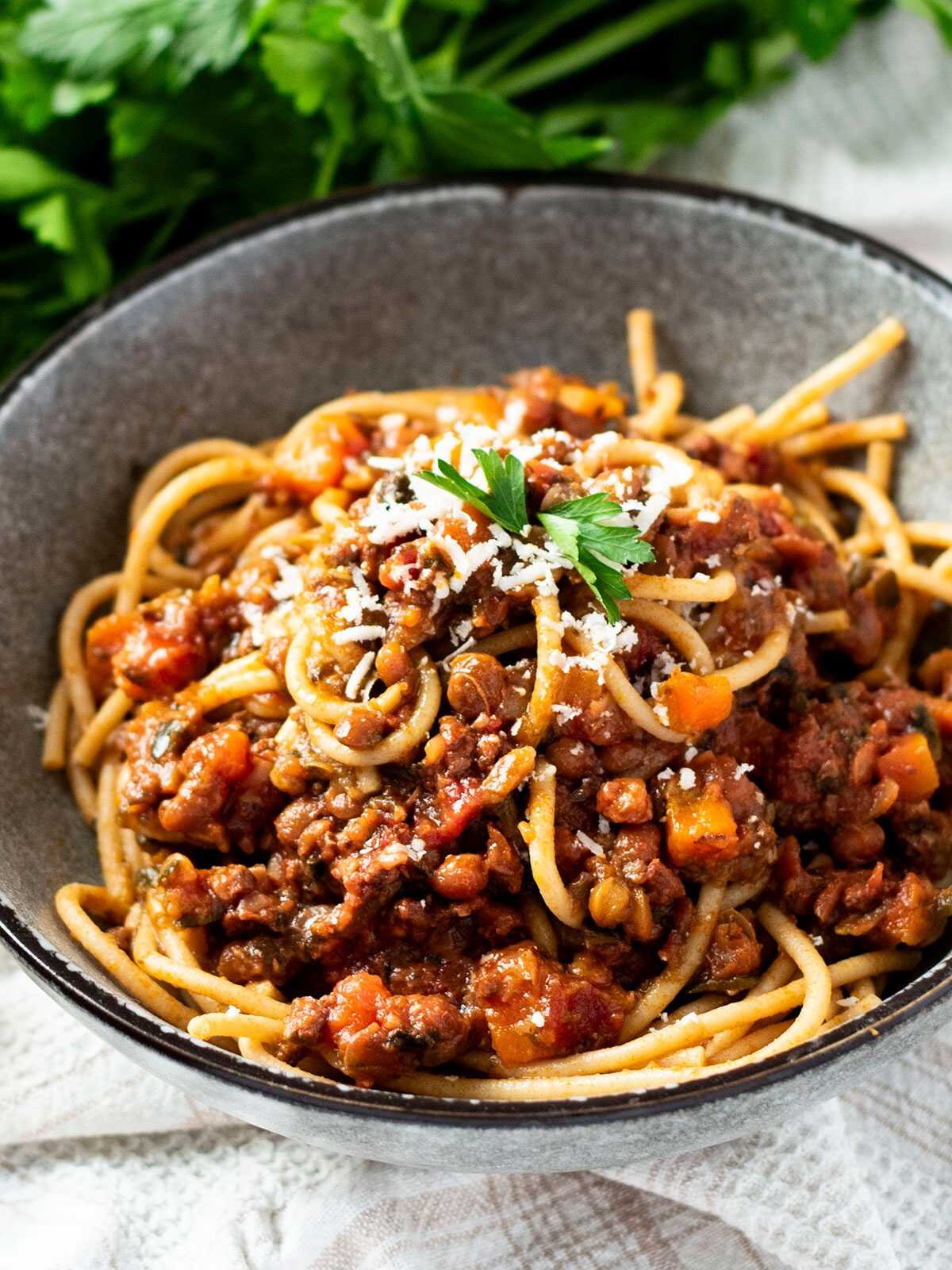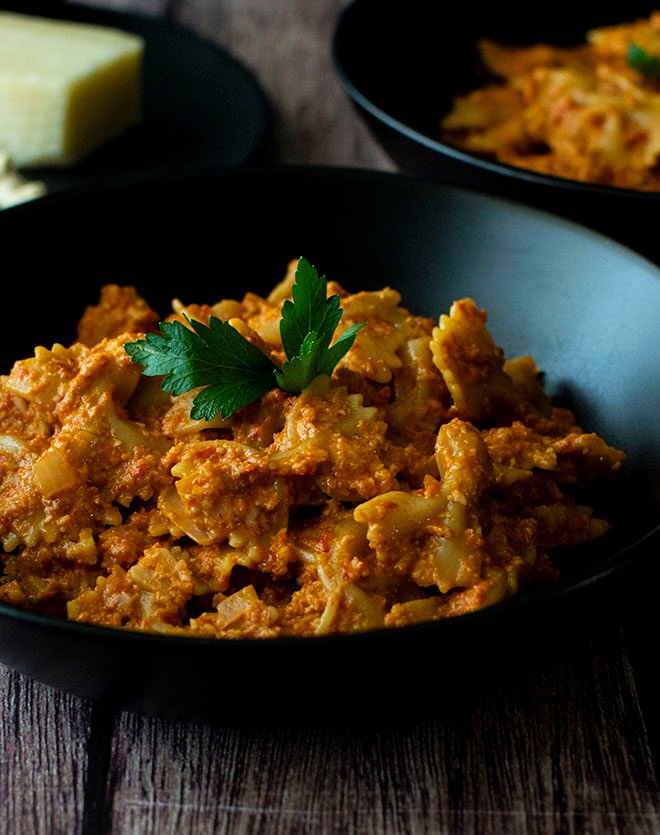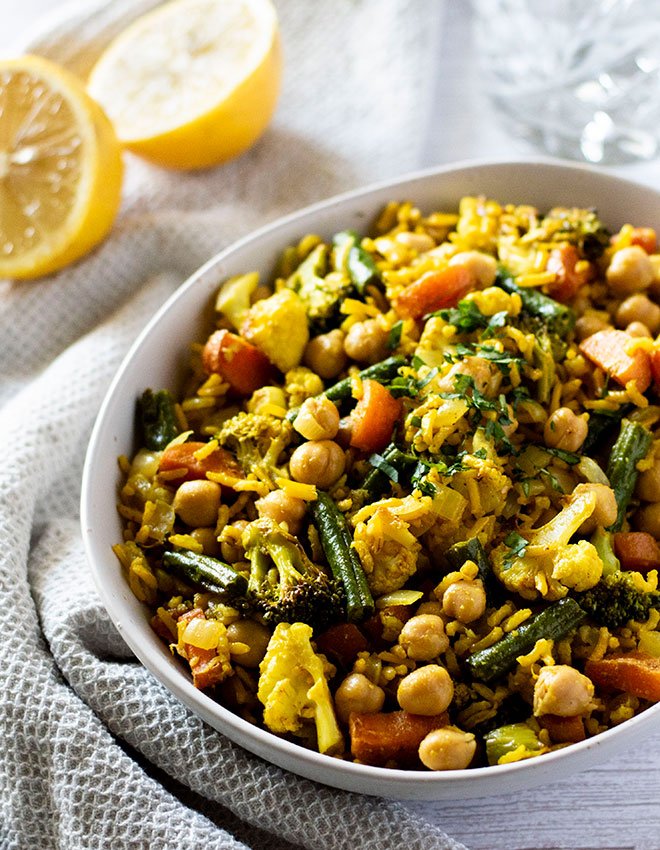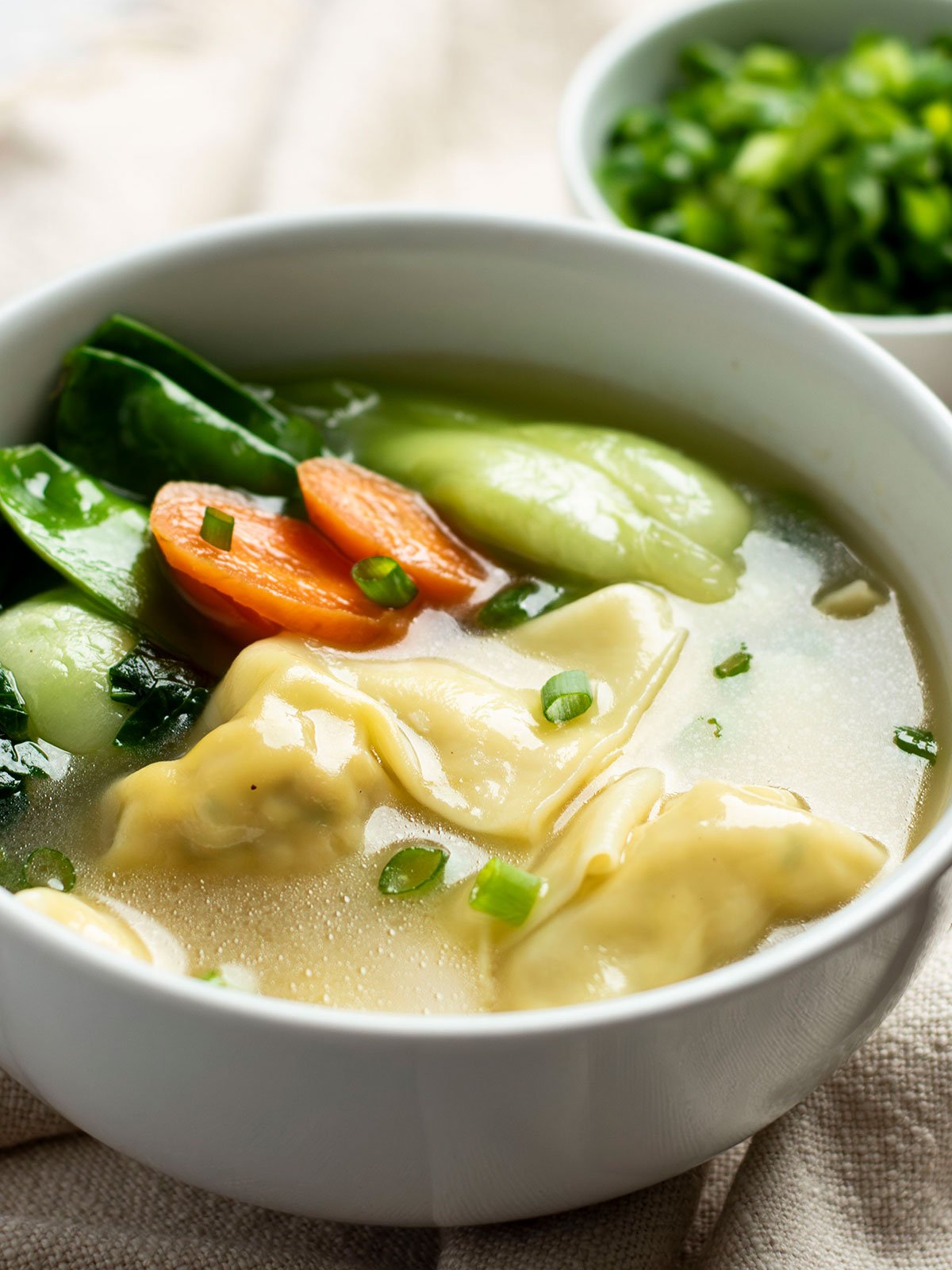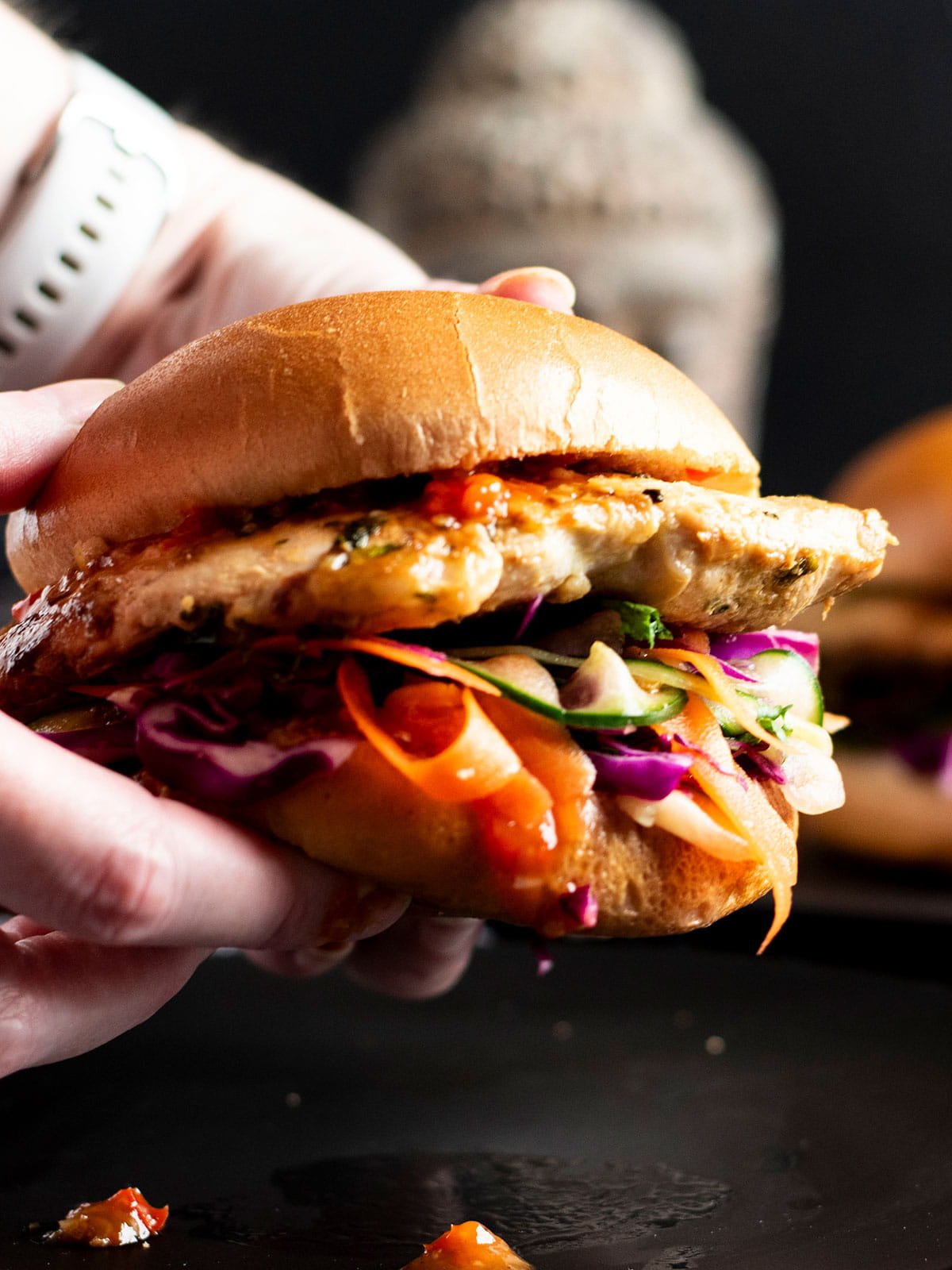Kiwi Juice with Apple & Cucumber
This refreshing Kiwi Juice recipe is just super easy and quick to make. Fresh kiwifruit, apples, cucumber, and celery are blended to make the perfect, vibrant green drink that is simple and healthy.
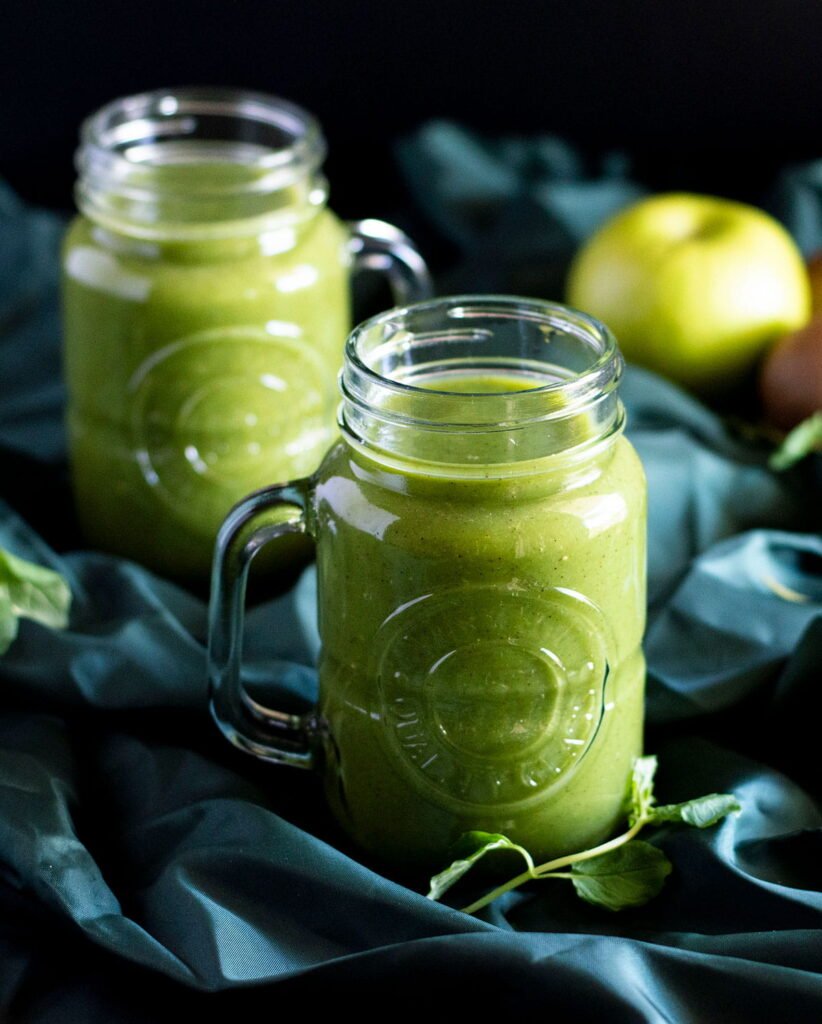
While I am generally not an advocate of juices, they can be a great way to get extra fruit and vegetables into your diet. Although, many store-bought juices come loaded with added sugars and other additives, even the vegetable juices.
I feel that kiwifruit is one of the most overlooked fruits for juicing, when it has so much to offer in terms of flavour and nutrition. Here in Australia, you cannot even buy kiwi drinks! If you’re not a massive fan, juices with kiwi with other fruit and vegetables are a great way to mask flavours you don’t like. This is my go-to recipe for kiwi fruit juice, and it is lovely and refreshing during a hot summer!
Why you’ll love this Kiwi Juice recipe
What’s great about this fresh kiwi apple juice is that it’s:
- Sweet, without being overly sweet,
- Refreshing (from the mint and cucumber juice!),
- Super quick and easy to make (less than 10 minutes and without a juicer!),
- Contains no added sugars, preservatives or other hidden additives, and
- Made from whole foods that are good for you!
With the rising cost of living, buying a good bottle of cold-pressed juice is no longer cheap. This kiwifruit juice recipe cost me AUD$7.30 (~USD$4.91) during peak kiwi and celery season. While it is still budget friendly, it can easily be made cheaper with some simple swaps.

Juices vs Smoothies
Although juices and smoothies are both drinks, there is a difference between the two:
- Juices – Extract only the liquid content of fruit and vegetables, leaving behind the fibrous pulp (and dietary fibre!). This is typically made using a juicer, which are difficult to clean.
- Smoothies – Blends entire fruit and vegetables together, including the juice and dietary fibre. Uses a blender which are much easier to clean (which is a double win in my book!).
So, while I may call this a kiwi juice recipe, by definition, it is technically an apple and kiwi smoothie. Both are a good source of vitamins and minerals; however, smoothies contain more dietary fibre than juices, especially if you leave the skins on!
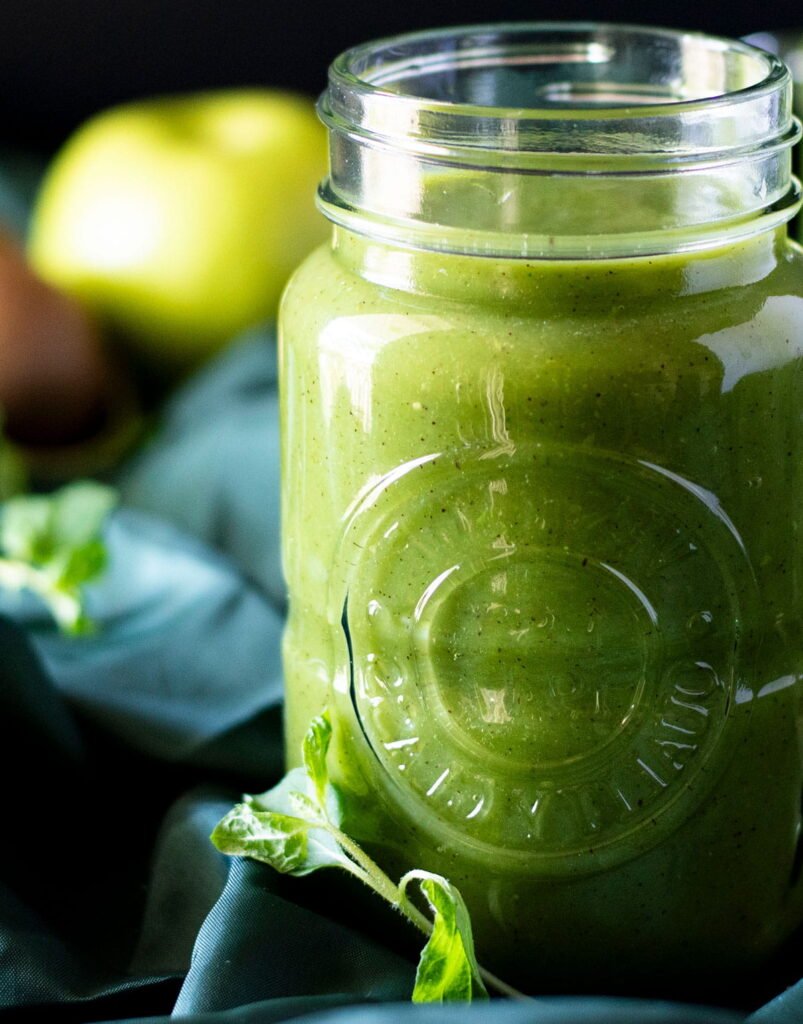
Benefits of Kiwifruit
Whole kiwi fruit (and kiwi juices) come with a range of benefits, such as:
- A fantastic source of dietary fibre, both soluble and insoluble! In fact, having 2 kiwifruit per day may help relieve constipation and improve bowel movement frequency.
- They have a good amount of vitamin C, which supports skin, bone and tissue health and helps our bodies to absorb iron.
- Are rich in folate, which our bodies use to create DNA for new cells, and vitamin K, which helps keep our bones strong and regulates blood clotting.
- Kiwifruit (and all the other ingredients) also contains a wide range of antioxidants (including vitamins C and E and more), which may help get rid of damaging free radicals and reduce bodily inflammation.
Recipe suitability
In just one serve of this Kiwi Juice, you get 3/4 serve of fruit and 1 serve of vegetables! It contains a moderate amount of fibre at 5.4g of per serve, which makes it a great drink to support your gut health. It is low in fat (and saturated fat), cholesterol and sodium, which makes it heart friendly. It is also gluten free and vegan!
Ingredients for Kiwi Juice
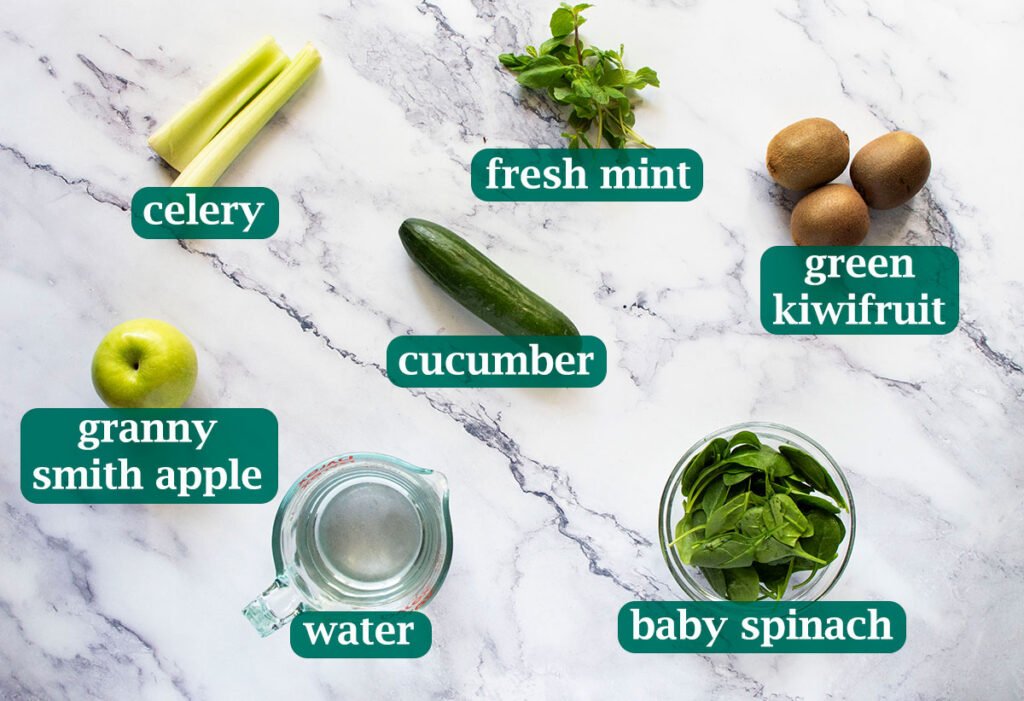
- Kiwifruit – The main ingredient. Scroll up to read about the benefits of kiwifruit!
- Granny mith apple – A tart green apple is perfect for this kiwifruit juice, as it adds a tangy sweetness while giving additional dietary fibre (especially with the skin on).
- Cucumber – Despite being 96% water, cucumbers contain antioxidants that may reduce inflammation and damage from harmful free radicals. Cucumber juice is also super refreshing.
- Celery – Like cucumber, celery is mainly made of water and contains antioxidants. It also has some dietary fibre.
- Baby spinach – Similar to kiwifruit, are a rich source of vitamin K. Baby spinach contains beta-carotene, which our bodies can convert into vitamin A to maintain our eye health and vision, but it also doubles as an antioxidant. Lastly, it is also a source of plant-based iron, which makes the haemoglobin part of our blood cells, which carries oxygen around our bodies.
- Mint – Contains the chemical menthol, which gives a cooling sensation when eaten (and helps make this juice even more refreshing!). However, if you can’t find mint, you can leave it out without affecting the flavour of the apple kiwi juice.
- Water – An essential nutrient that makes up 60% of our total body weight on average. Water has many roles, it helps our bodies absorb and convert food into energy (the fuel for our bodies!), regulates body temperature (through sweating), cushions our joints and organs, and helps with removing waste (through urine).
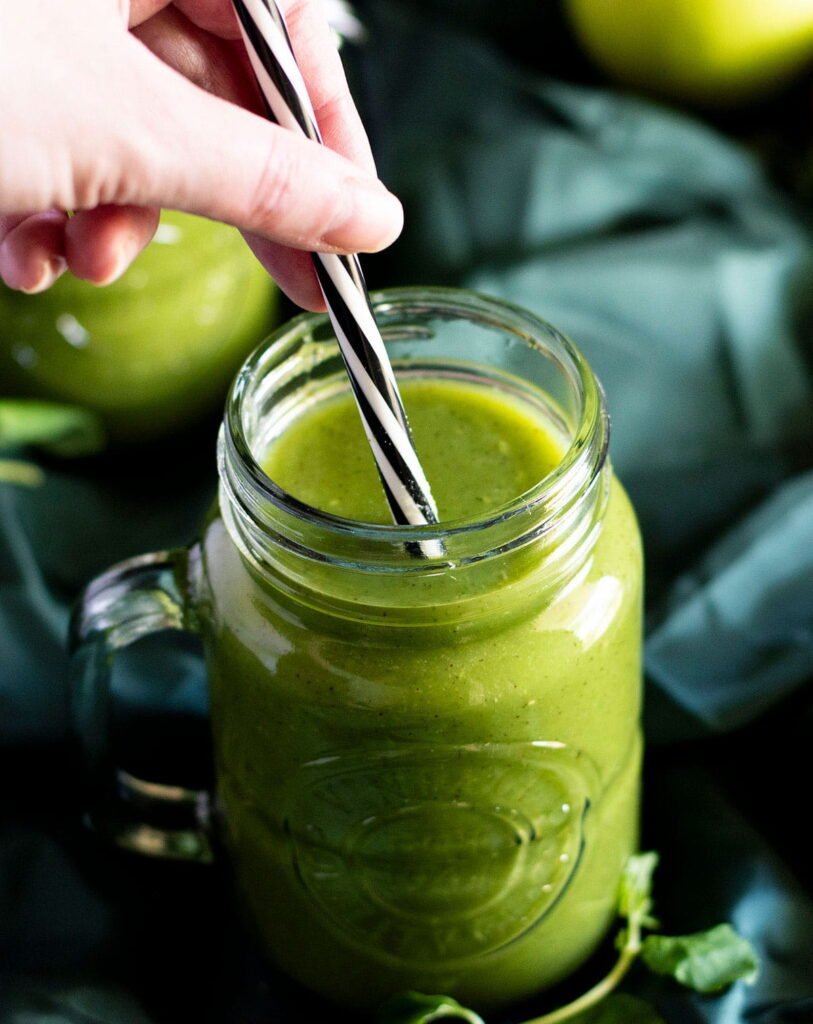
How to choose Kiwifruit
A perfectly ripe kiwi will feel slightly soft when given a gentle squeeze and has a sweet, fruity smell. If the kiwi is very firm and has minimal/no scent (as the sugars have not developed yet), it is likely under-ripe and will produce a more tart juice. Otherwise, if the kiwi has a sour/fermented scent and feels very soft or if your finger pokes through the skin, it is overripe.
Kiwifruit are best purchased when they are in season, that way, you get quality fruit at a reasonable price. However, being an autumn/winter fruit, kiwi season may be different depending on where you are:
- Australia & NZ – Between March and July.
- US – Peak selling season is from October to May.
- UK – January to August
How to prepare Kiwifruit
This may surprise you, but you can eat kiwi skin, and it’s good for us! In fact, the skin contains a good amount of nutrients such as dietary fibre, vitamin E and folate. So, by keeping the skin on when making your kiwi juice, you can get a bit more nutrients. However, you can still get a good amount of nutrients without the skin. It all comes down to your personal preference.
If you plan on using the whole kiwifruit, give them a good wash to remove any harmful bacteria and cut off the hard ends. Hot tip: You can remove the furry hairs by firmly rubbing the skin with a clean towel or a wet sponge.
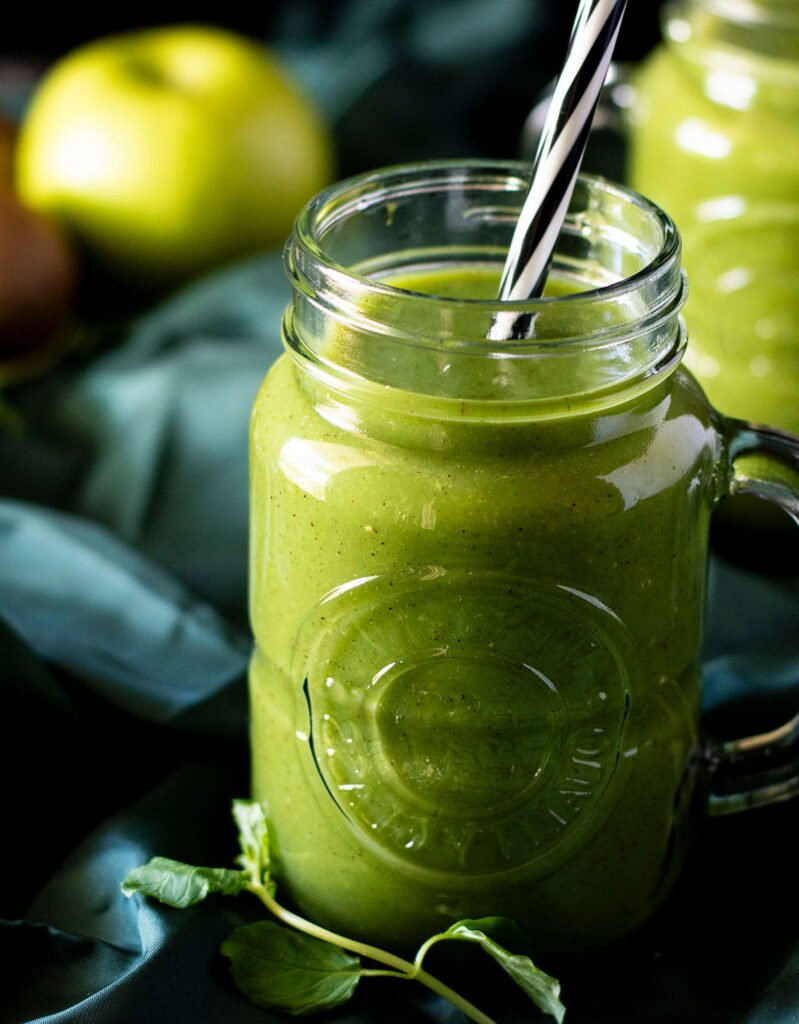
How to make Kiwi Juice
- Roughly chop the fruit and vegetables (removing any hard tops/end).
- Add the fruit, cucumber and other vegetables, mint and water to a blender and blitz for 2-3 minutes or until smooth. You may need to blitz the juice in two goes if your blender is small like mine (if so, just mix them together in a bowl once you’re done blending). Or, if using a stick/immersion blender, add the fruit, vegetables and to a bowl and blend together until smooth. Pour in the water and stir to mix.

- Pour the blended apple kiwi cucumber juice into a glass bottle or jar and store it in the fridge until ready to drink. If you find the juice a bit too thick to your liking, add more water until you reach your desired consistency. Serve this kiwi drink cold so that it is super refreshing!
Storage
Fresh juice will last in a glass bottle or mason jar in the fridge for up to 3-4 days.
You can also freeze this kiwi cucumber juice! Freeze in a silicone ice tray or a freezer-safe container for up to 3 months.
Other ways to use Kiwi Juice
- Ice blocks/popsicles – Pour into some popsicle moulds, and you will have a great cold treat during the spring or summer.
- Ice cubes – This can be a great way of adding some flavour and encouraging yourself to drink more if you dislike plain water.
- Slushie – Just add some ice cubes when blending.
- Cocktail – Add a touch of vodka or white rum, in moderation of course.

Substitutes & variations
The great thing about juices is that there are no hard and fast rules. However, if you want to keep this kiwi juice green in colour, stick to green fruit and vegetables. Other optional fruit and vegetables you could use in this juice are:
- Kale – Being popular, its more expensive and will increase the overall cost of the juice.
- Pineapple
- Mango
- Most berries – Strawberries, raspberries, blueberries.
- Melons – Such as honey due or rock melon/cantaloupe.
- Passionfruit
- Herbs – Basil would suit this juice quite well.
You can substitute green kiwi fruit for gold. However, it will likely affect the colour of the juice. If kiwifruit is not within your budget, you can substitute them for 1 small apple per 2 kiwifruit.
This juice is not overly sweet. If you want to increase the sweetness naturally, swap out the granny smith apple for a sweet red apple such as red delicious, ambrosia, gala or fuji (sweetest) varieties.
I do not recommend using any juice instead of water, as this will increase the sugar content of the juice and make it very sweet. You can use coconut water, but again, it is more expensive and will increase the total cost of the juice.
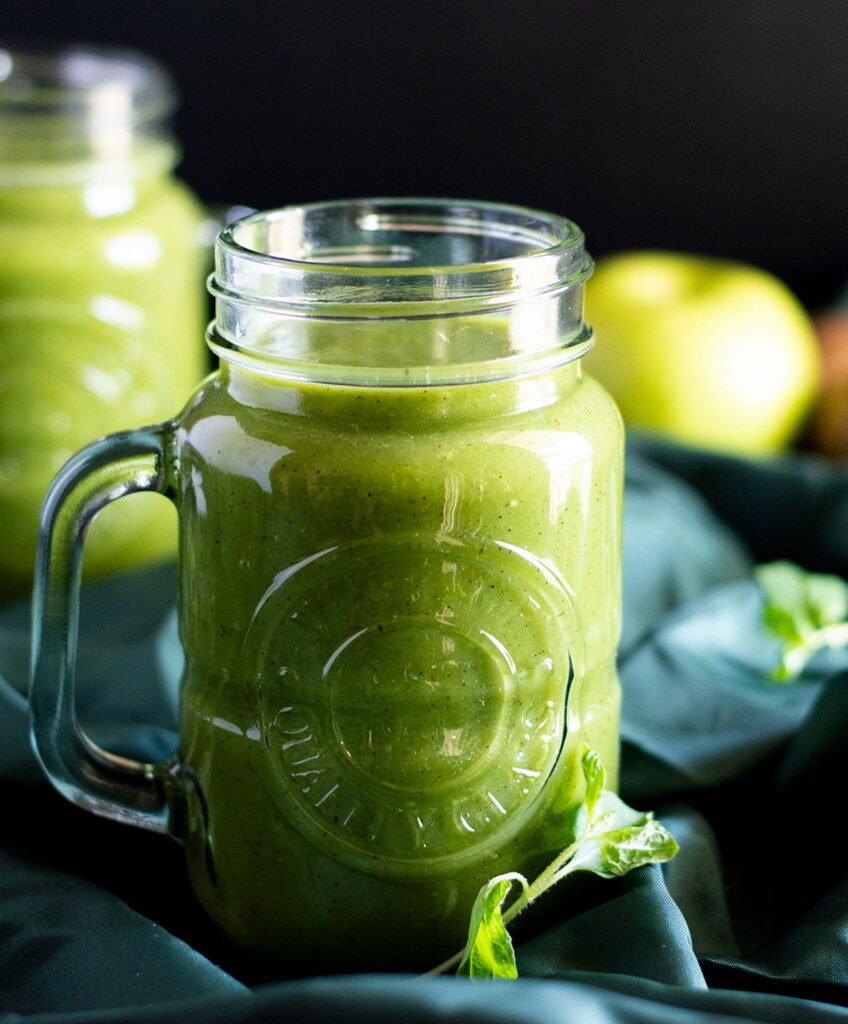
Tips
Note that the pulp and liquid of the kiwi juice will separate when left in the fridge, just give it a stir/shake before drinking.
If your juice is a little too thick your for liking, add a bit more water until it reaches your desired consistency.
You may be tempted to strain your kiwi juice, however, I do not recommend this. Straining the juice will remove a lot of the pulp which contains dietary fibre. This means you’ll miss out on all of the associated nutritional benefits from that fibre.
Other juices you may like
Hungry for more?
Don’t forget to subscribe to my newsletter and follow along on Facebook, Instagram and Pinterest for all the latest updates!
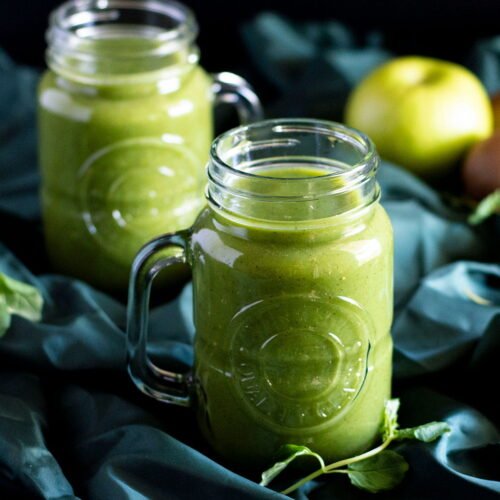
Tap or hover to scale
Ingredients
- 4 green kiwifruit, peeled or unpeeled (Note 2)
- 1 small granny smith apple, cored and roughly chopped
- 1 cup celery, roughly chopped
- 1 cup cucumber, roughly chopped
- 1 cup baby spinach
- 2 tsp mint, firmly packed
- 1 1/2 cups water
Instructions
- Roughly chop the fruits and vegetables (removing any hard tops/end).
- Add the fruit, cucumber and other vegetables, mint and water to a blender and blitz for 2-3 minutes or until smooth. You may need to blitz the juice in two goes if your blender is small like mine (if so, just mix them together in a bowl once you're done blending). Or, if using a stick/immersion blender, add the fruit and vegetables to a bowl and blend together until smooth (Note 3). Pour in the water and stir to mix.
- Pour the blended apple kiwi cucumber juice into a glass bottle or jar and store it in the fridge until ready to drink (Note 4). If you find the juice a bit too thick to your liking, add more water until you reach your desired consistency. Serve this kiwi drink cold so that it is super refreshing!
Notes
- Health benefits – Details regarding the health benefits of this kiwi juice and it’s ingredients are in the post above.
- Kiwifruit – I used green, as I prefer them over gold varieties. You will get more nutrition by including the peel in your juice, but this is up to your personal preferences. If you experience or have previously experienced prickly, itchy or tingling feelings around the mouth, lips, tongue and throat after eating either kiwifruit/kiwi skin, please do not drink this juice as this could be a mild allergy.
- Straining – I do not recommending straining the juice, as this will remove a lot of the pulp which contains dietary fibre. This means you’ll miss out on all of the associated nutritional benefits from that fibre.
- Juice – The pulp and liquid of the kiwi juice will separate when left in the fridge, just give it a stir/shake before drinking.
- Storage – 3-4 days in a glass bottle/mason jar in the fridge. You can also freeze this juice in an ice cube tray or freezer safe container.
- Nutrition – Calculated per serve, assuming 3 serves.


